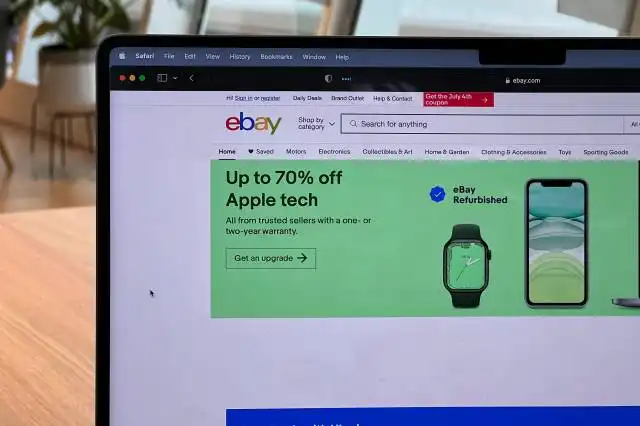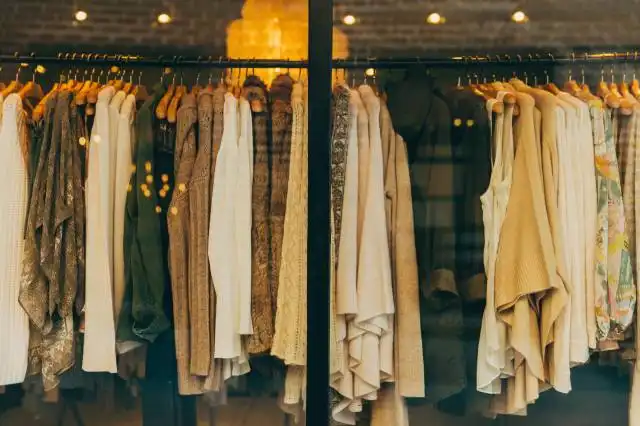Start a Glasses Store
Envision Your Future in the Stylish and High-Tech World of Eyewear Business
| Updated


GLASSES STORE
Welcome my budding entrepreneur, to the spectacle that is eyewear business! The eyewear business is an intriguing optical oasis where you'll balance selling stylish frames and quality lenses, all while ensuring customers see the world with 20/20 clarity. This business keeps you astute - you're part fashion guru, part health tech expert, all wrapped up in a sharp business persona. Put on your entrepreneurial glasses, and see a future where style meets clear sight!
Jump to Business Plan
RELATED BUSINESS IDEAS
Browse ALL Retail & Shopping Business Ideas
Discover Your Perfect Domain
Unlock the door to your online success with our hand-picked selection of premium domain names. Whether you're starting a new venture or rebranding an existing one, the right domain can set the tone for your digital presence. Browse through our curated list, each with its unique potential to enhance your brand's visibility and credibility.
GLASSES STORE MINI BUSINESS PLAN
This a quick reality check to help you identify the strengths and weaknesses of your business concept before you dive in.
Expected Percent Margin:
- Gross Margin: 50-60%
- Net Profit Margin: 10-20%
Earnings Expectations:
- Daily Earnings: $200 - $500
- Weekly Earnings: $1,400 - $3,500
- Monthly Earnings: $6,000 - $15,000
- Annual Earnings: $72,000 - $180,000
Actions to Hit Those Numbers:
Inventory Management:
- Initial Investment: At least $50,000-$75,000 for an extensive, quality inventory.
- Supplier Network: Establish relationships with reliable eyewear brands/manufacturers.
Marketing and Customer Acquisition:
- Social Media: Regular posts featuring popular brands, deals, as well as educational content on eye health.
- Local Advertising: Allocating $1,000 a month for ads in local media, SEO, in-store promotions etc.
Sales and Customer Experience:
- Staffing: Employ certified optometrists for eye tests along with sales associates for in-store support.
- Upselling: Train staff in upselling to higher margin products or adding coatings to lenses.
Cost Control:
- Rent: Choose a location where rent is less than 10% of expected monthly sales.
- Utilities and Maintenance: Budget around $500-$800 per month as per local rates.
Business Operations:
- Open Hours: Open at least 6 days a week, 9-10 hours a day for maximum customer outreach.
- Transaction Volume: Aim for 15-20 transactions per day at an average sale price of $100-$200.
Disclaimer: All figures are estimations and may vary depending upon location, competition, and individual business strategies. Always conduct market research and seek advice from a business consultant before starting out.
NOT WHAT YOU HAD IN MIND? Here are more ideas



Browse ALL Retail & Shopping Business Ideas
Grab Your Business Website Name
Before you get caught up in the whirlwind of setting up your business, invest in a domain name. It's a small but significant step that lays the foundation for your brand and makes it easier for customers to find and trust you. Just like you wouldn't build a house without securing the land first, don't build a business without securing your domain name.
"Why? Can't that wait?" Here's why it shouldn't
Step 1: Determine if the Business is Right for You
Breakdown of Startup Expenses
When starting a glasses store, there are a variety of startup expenses that must be taken into account. These expenses can include the cost of renting a storefront, purchasing the necessary equipment and supplies, and hiring employees. Additionally, the cost of marketing and advertising should be taken into consideration. It is important to research the local market and determine the cost of these expenses in order to ensure that the business is profitable.
Breakdown of Ongoing Expenses
In addition to startup expenses, there are also ongoing expenses that must be taken into account when starting a glasses store. These expenses can include the cost of purchasing inventory, paying employees, and maintaining the store. Additionally, the cost of utilities, insurance, and taxes should be taken into consideration. It is important to research the local market and determine the cost of these expenses in order to ensure that the business is profitable.
Examples of Ways to Make Money
When starting a glasses store, there are a variety of ways to make money. One way to make money is to sell glasses frames and lenses. Additionally, the store can offer services such as eye exams, fitting, and repairs. The store can also offer accessories such as cases and cleaning cloths. Additionally, the store can offer discounts and promotions to attract customers. It is important to research the local market and determine the best ways to make money in order to ensure that the business is profitable.
Step 2: Name the Business
When it comes to naming a business, it is important to choose a name that is memorable and that accurately reflects the business. It is also important to make sure the name is not already taken by another business. One way to come up with a unique name is to brainstorm ideas with friends and family. Consider the type of business, the target audience, and the mission of the business when coming up with a name. Additionally, research the domain name availability to make sure the name can be used for a website and other online platforms. It is also important to make sure the name is not too long or difficult to spell. Once the business name has been chosen, it is important to register it with the appropriate government agency. This will ensure that the business name is legally protected and that no one else can use it.
Step 3: Obtain Necessary Licenses and Permits
The third step in starting a glasses store is to obtain the necessary licenses and permits. Depending on the location, this may include a business license, a seller’s permit, a resale permit, and/or a health permit. It is important to research the specific requirements in the area, as they may vary from state to state. Additionally, it is important to check with the local zoning board to ensure that the business is in compliance with any zoning regulations.
In some cases, a business may need to obtain a special permit or license to sell glasses. For example, in some states, opticians must be licensed in order to sell glasses. In other states, it may be necessary to obtain a special permit to sell prescription glasses. It is important to research the specific requirements in the area and to obtain the necessary permits and licenses before opening the business.
Furthermore, it is important to ensure that the business has the necessary insurance coverage. This may include general liability insurance, product liability insurance, and/or property insurance. It is important to research the specific requirements in the area and to obtain the necessary insurance coverage before opening the business.
Finally, it is important to ensure that the business is in compliance with any applicable federal, state, and local laws. This may include laws related to the sale of eyewear, the sale of prescription eyewear, and/or the sale of contact lenses. It is important to research the specific requirements in the area and to ensure that the business is in compliance with all applicable laws before opening the business.
Step 4: Find a Suitable Location
Finding a suitable location for a glasses store is essential to the success of the business. It is important to consider the demographics of the area, the competition, and the foot traffic. It is also important to consider the cost of rent and the availability of parking. Additionally, the store should be easily accessible and visible to potential customers.
When selecting a location, it is important to research the local zoning laws and regulations to ensure that the store is in compliance. It is also important to consider the size of the store and the layout of the space. It is important to ensure that the store is large enough to accommodate the necessary equipment and inventory. Additionally, the store should have adequate lighting and space for customers to browse.
When selecting a location, it is important to consider the store’s proximity to suppliers and other businesses. It is also important to consider the store’s proximity to public transportation and major highways. Additionally, it is important to consider the store’s proximity to other businesses that may be potential customers.
Finally, it is important to consider the store’s visibility. The store should be easily visible from the street and should be well-lit at night. Additionally, the store should have adequate signage to attract customers. The store should also be easily accessible to customers, with adequate parking and easy access to public transportation.
Step 5: Design the Store
Designing the store is an important step in starting a glasses store. It is important to create a space that is inviting and comfortable for customers. When designing the store, consider the layout, lighting, and furniture. Make sure to include plenty of display space for the glasses. Additionally, consider the colors and materials used in the store. Choose colors and materials that will create a pleasant atmosphere for customers. Additionally, consider the type of technology that will be used in the store. This could include a computer system for customers to use to search for glasses or a digital display for customers to view the glasses. Finally, make sure to include a checkout counter and a comfortable seating area for customers to try on the glasses.
Step 6: Purchase Glasses and Supplies
Once you have determined the type of glasses and supplies you will need, it is time to purchase them. You will need to research different suppliers and compare prices to get the best deal. Make sure to factor in shipping costs, as this can add up quickly. You may also want to consider buying in bulk to get a better price. You should also consider the quality of the glasses and supplies you are buying. It is important to make sure you are providing your customers with quality products. Additionally, you may want to consider purchasing insurance for your glasses and supplies in case of any damages or losses.
Step 7: Market the Store
Marketing is essential for any business to succeed. It is important to create a strong brand identity and to get the word out about the store. There are many ways to market a glasses store, including traditional methods such as print advertising, radio and television spots, and direct mail campaigns. Additionally, digital marketing methods such as search engine optimization (SEO), pay-per-click (PPC) advertising, and social media marketing should be used to reach potential customers. Additionally, it is important to create an email list of customers and to send out regular newsletters and promotions. Finally, it is important to create a website for the store and to use it to showcase the products and services offered.
Step 8: Hire Employees
Hiring employees is an important step in starting a glasses store. It is important to find the right people who will be able to help the business succeed. When hiring employees, it is important to consider the skills and experience they bring to the table. It is also important to consider the cost of hiring them and the cost of training them. It is important to consider the cost of benefits, such as health insurance and vacation time, as well as the cost of wages. It is also important to consider the cost of employee turnover, which can be expensive.
When hiring employees, it is important to create a job description that outlines the duties and responsibilities of the position. It is also important to create a job application that outlines the qualifications and experience needed for the position. It is also important to create a hiring process that includes interviews and background checks. It is important to make sure that the hiring process is fair and unbiased.
When hiring employees, it is important to create a training program that will help employees learn the skills and knowledge needed to do their job. It is also important to create a system of rewards and recognition that will help motivate employees to do their best. It is important to create a system of performance evaluation that will help ensure that employees are meeting the expectations of the business.
When hiring employees, it is important to create a system of communication that will help ensure that employees are informed of any changes or updates to the business. It is also important to create a system of feedback that will help employees understand how they are performing and how they can improve. Finally, it is important to create a system of support that will help employees feel valued and appreciated.
Step 9: Open the Store
The ninth and final step to starting a glasses store is to open the store. This will involve setting up the store, stocking the shelves, and hiring staff. It is important to make sure that the store is properly stocked with the right products and that the staff is well trained and knowledgeable about the products. It is also important to make sure that the store is well-lit and inviting for customers. Finally, it is important to make sure that the store is properly marketed and advertised to attract customers. This can be done through traditional methods such as print, radio, and television advertising, as well as through digital methods such as social media and search engine optimization. Additionally, it is important to have a website and online store for customers to purchase glasses from. This will help to increase the store’s visibility and reach a larger customer base. Once the store is open and running, it is important to monitor sales and customer feedback to ensure that the store is meeting customer needs and expectations.
EXPLORE MORE CATEGORIES
Browse ALL Business Idea Categories
TAKE THE NEXT STEPS









